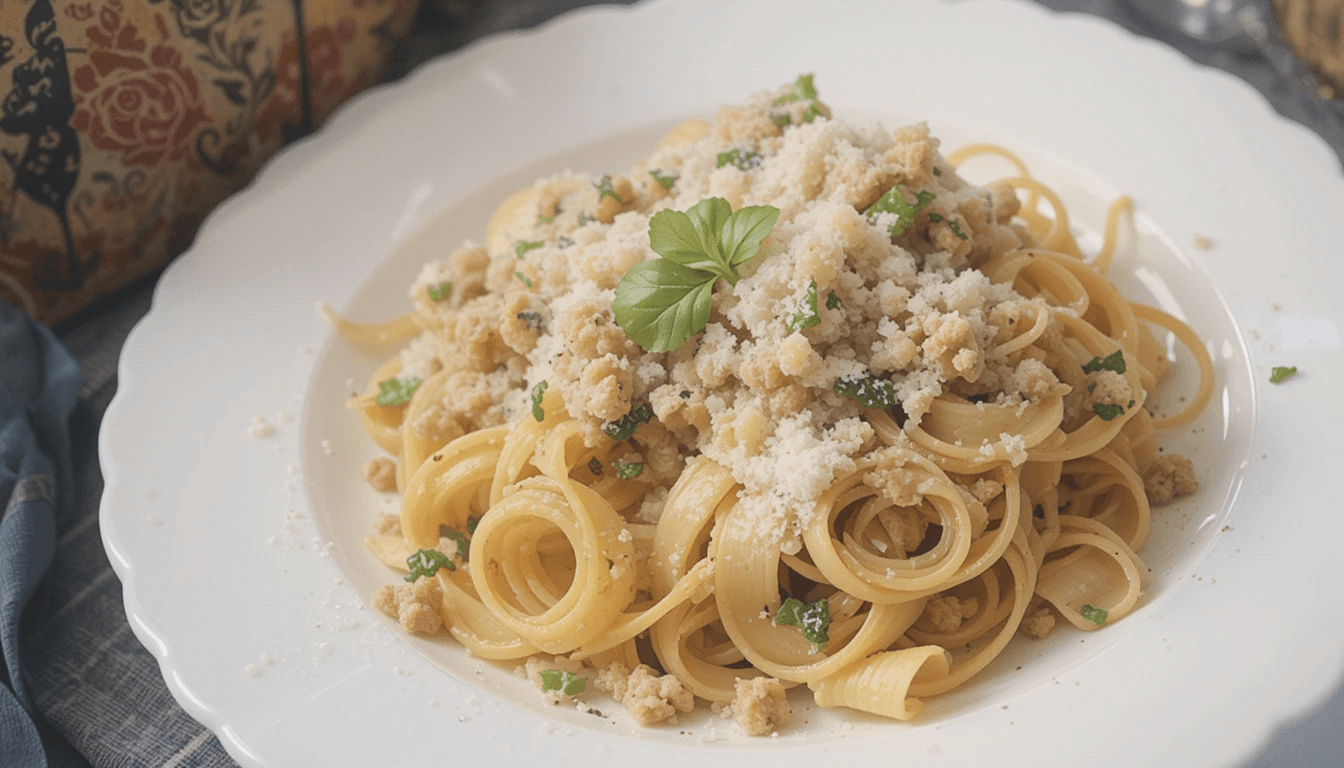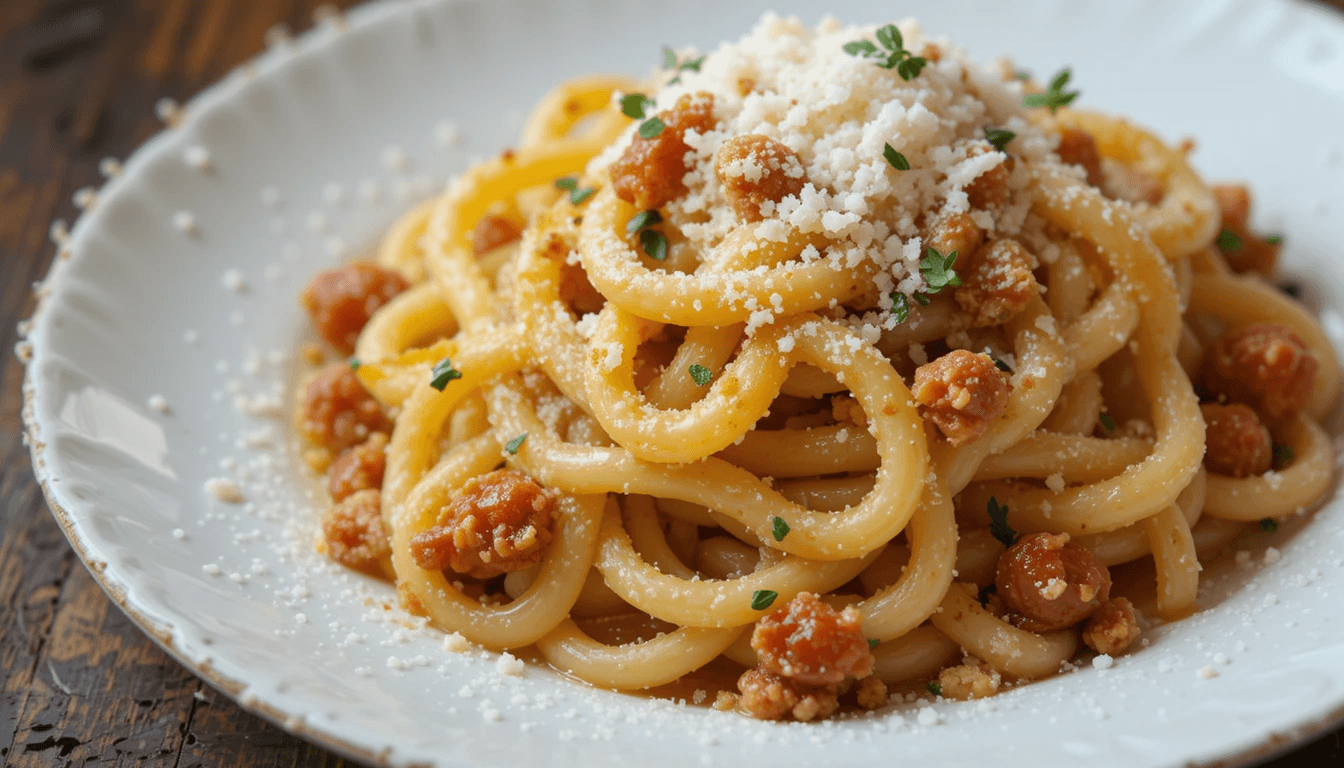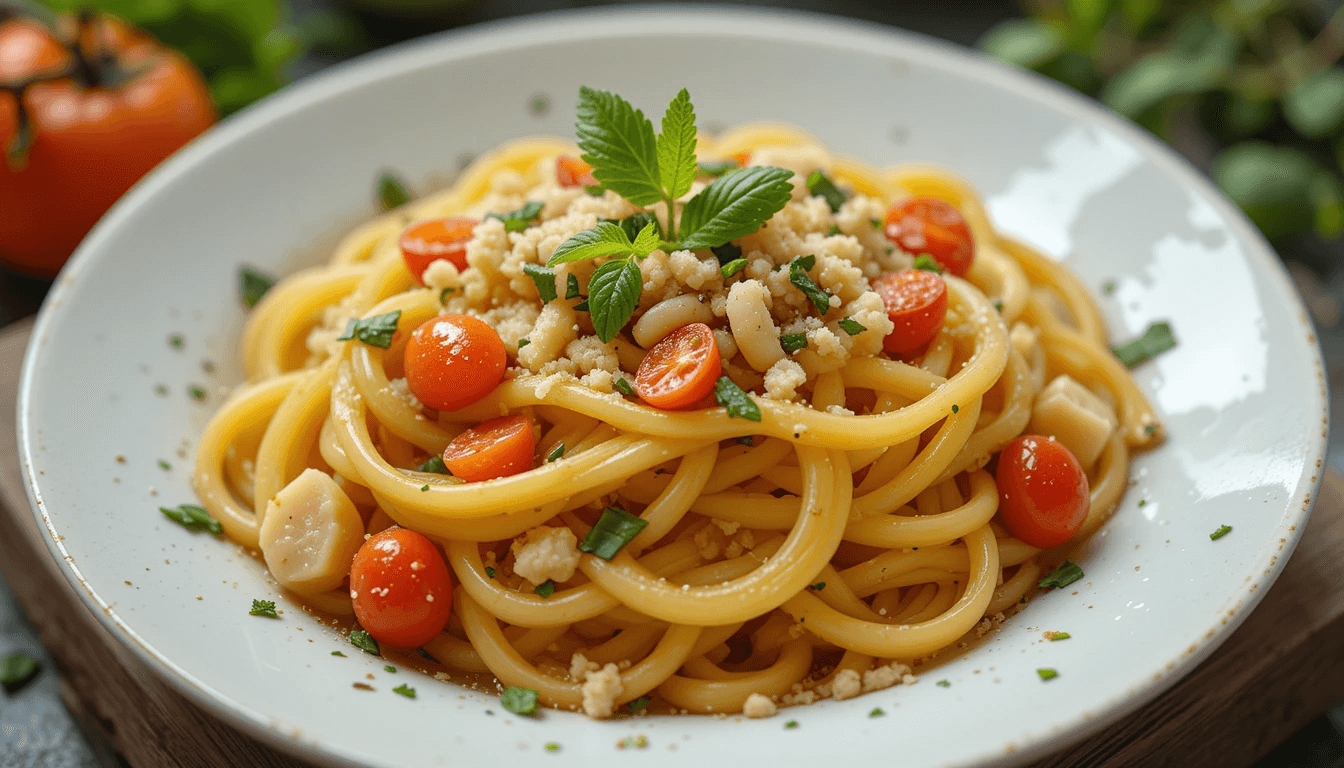
Trottole pasta is a uniquely spiraled Italian noodle that adds both visual appeal and satisfying texture to any dish. In this article, you’ll learn the best ways to cook, sauce, and serve it, whether you’re craving a comforting meal or looking to impress dinner guests. From its shape to its pairing options, trottole pasta proves that pasta night can be anything but ordinary.
Have you ever come across a pasta shape so whimsical that it practically begged you to cook it? That’s what happens the moment you lay eyes on trottole pasta—spirals of dough that resemble little spinning tops. There’s something incredibly fun and inviting about these curled-up noodles. They soak in sauces so well that each swirl becomes a tiny pocket of flavor.
Disclaimer: This article is for informational purposes only and does not replace professional veterinary advice or medical consultation. Always consider your individual health and dietary needs when making food choices.

The Spiraled Charm of Trottole Pasta
Trottole pasta gets its name from the Italian word for “spinning top,” which perfectly describes its shape. Like a spinning top, each piece has a solid, curled base that swirls up to a narrower tip, creating a unique and eye-catching silhouette. This shape is usually formed through a special extrusion process that molds the dough into a spiral.
A Brief Look at Its Origins
While it’s hard to pinpoint exactly when trottole pasta first emerged, it’s widely believed to have originated in Southern Italy, much like many of the country’s most beloved pasta shapes. Southern regions often focus on durum wheat semolina for pasta-making, which yields a dense, chewy texture. According to the Italian trade organization Associazione delle Industrie del Dolce e della Pasta Italiane (AIDEPI), strong semolina wheat contributes significantly to the authentic Italian pasta experience Source:[AIDEPI](http://www.aidepi.it)Source: [AIDEPI](http://www.aidepi.it). Because trottole pasta is typically made from durum wheat semolina, its sturdiness makes it well-suited to hearty sauces and generous cooking methods.
Why Trottole Stands Out
- Visual Appeal: Trottole pasta adds a playful twist to your plate, making it perfect for both casual family dinners and more festive gatherings.
- Sauce Absorption: The spiral ridges capture and hold onto sauces, ensuring every forkful is flavorful.
- Hearty Texture: Because it’s thicker than many other pasta shapes, trottole pasta offers a satisfying bite that holds up well in baked dishes and casseroles.
If you’ve ever worried that a certain sauce might slip right off your pasta, trottole pasta can solve that problem. Its spirals make a perfect landing pad for any sauce you can dream up—from a light olive oil-based concoction to a robust Bolognese. This shape also works wonders in pasta salads, where you need every bite to carry the dressing and added ingredients.

Nutritional Perspectives on Trottole Pasta
Trottole pasta generally shares a similar nutritional profile with other wheat-based pastas. Here’s a quick rundown of typical nutritional information for standard durum wheat trottole, per one-cup serving (around 56 grams dry):
- Calories: ~200 calories
- Carbohydrates: ~42 grams
- Protein: ~7 grams
- Fat: ~1 gram
- Fiber: ~2–3 grams (depending on brand)
Healthier Options
If you’re looking to get more nutrients in your diet or manage specific health conditions, you might consider:
- Whole Wheat Trottole: Offers higher fiber content and a more robust flavor.
- Gluten-Free Trottole: Often made from rice, corn, or legume flour. Great if you have celiac disease or gluten sensitivity.
- Flavored Trottole: Some brands incorporate spinach, tomato, or other vegetable powders for extra color and nutrients.
For those concerned about portion sizes, remember that pasta expands during cooking. A cup of cooked trottole pasta can be surprisingly filling, and adding vegetables or lean protein can transform a simple bowl into a balanced meal. According to a study published in the Nutrition Journal, moderate consumption of pasta, when paired with vegetables and protein, can be part of a healthy eating plan Source:∗NutritionJournal∗,2017Source: *Nutrition Journal*, 2017. Of course, you’ll want to keep your individual dietary needs in mind, especially if you have unique health concerns.
Cooking Trottole Pasta Like a Pro
While cooking trottole pasta might seem straightforward, there are a few tips that can help you achieve that perfect al dente texture. When cooked correctly, the spiral shape remains intact and offers a satisfying chew without feeling rubbery or underdone.
1. Use Plenty of Water
A general rule of thumb is to use at least 4–6 quarts of water per pound of trottole pasta. Having enough water allows the pasta to move freely and helps prevent sticking.
2. Season Generously with Salt
Salt your water once it’s boiling—about 1 tablespoon for every 4 quarts of water. This infuses flavor into the pasta itself, a crucial step that can elevate your entire dish.
3. Cook to Al Dente
Most trottole pasta packages include recommended cooking times. Typically, you’ll boil trottole for 9–12 minutes. Start checking the texture around the 8- or 9-minute mark. Bite into a piece and ensure there’s a firm center but no chalky aftertaste.
4. Reserve Some Pasta Water
Before draining, scoop out about half a cup of the starchy cooking water. This cloudy water can help thicken and bind sauces if you plan to toss your trottole pasta with, say, a pesto or cream sauce.
5. Don’t Rinse (Unless You’re Making a Salad)
Rinsing pasta strips away the starch that helps sauces cling. If you’re making a cold pasta salad, a quick rinse in cold water is acceptable to stop the cooking process. Otherwise, go directly from the colander into the sauce for optimal flavor absorption.
By applying these tips, you’ll set the stage for a delicious meal every time you cook trottole pasta. Given its spiral shape, a final swirl in the sauce will ensure that every bite is coated in goodness.
Flavor Pairings: Making the Most of Trottole Pasta
The beauty of trottole pasta lies in how versatile it can be. Its twisted shape is an excellent canvas for all kinds of sauces and ingredients.
Popular Sauce Options
- Tomato-Based Sauces: Classic marinara, arrabbiata, or even a slow-simmered ragù.
- Creamy Sauces: Alfredo, carbonara, or a mushroom cream sauce.
- Pesto or Herb Sauces: Basil pesto, sun-dried tomato pesto, or a light olive oil, garlic, and herb mixture.
Proteins & Veggies
- Proteins: Grilled chicken, shrimp, sausage, or even tofu.
- Vegetables: Bell peppers, zucchini, spinach, or roasted eggplant.
- Beans & Legumes: Chickpeas, cannellini beans, or lentils.
Because trottole pasta has a heftier shape, it can stand up to heartier proteins like sausage or beef without getting overshadowed. If you prefer lighter fare, a simple olive oil and garlic sauce with sautéed veggies can still feel delightfully filling when paired with this spiral pasta.
Classic Trottole Pasta Recipe: Step-by-Step
Here’s a straightforward recipe that highlights everything you love about trottole pasta. It features a creamy, cheese-infused sauce that clings to every spiral, plus a colorful medley of vegetables for extra freshness.
Ingredients (Serves 4)
- 1 pound trottole pasta
- 2 tablespoons olive oil
- 1 cup sliced mushrooms
- 1 cup chopped spinach
- 2 cloves garlic, minced
- 1 cup heavy cream
- ½ cup grated Parmesan cheese
- Salt and pepper to taste
- Optional: ½ pound cooked, sliced chicken breast
Instructions
- Boil the Pasta
- In a large pot, bring 4–6 quarts of water to a rolling boil. Salt generously and add the trottole pasta, cooking until al dente (about 9–11 minutes). Reserve half a cup of pasta water before draining.
- Sauté the Veggies
- In a separate skillet, warm the olive oil over medium heat. Add mushrooms and sauté until they release their moisture and turn golden. Toss in the chopped spinach and minced garlic, cooking for another minute or two.
- Add Cream and Cheese
- Lower the heat to medium-low. Pour in the heavy cream, stirring gently. Mix in the Parmesan cheese and allow it to melt. If the sauce seems too thick, thin it out with a splash of your reserved pasta water.
- Incorporate the Trottole Pasta
- Transfer the drained trottole pasta into the skillet. Fold it into the creamy sauce, ensuring every spiral is coated. Season with salt and pepper, and stir in the cooked chicken if you’re adding protein.
- Plate and Serve
- Once everything is well-combined, turn off the heat. Scoop portions into individual bowls, garnish with extra Parmesan if desired, and enjoy immediately.
This simple yet indulgent recipe showcases the true potential of trottole pasta. The spirals trap the cream sauce, allowing each bite to burst with flavor.
Getting Creative: Alternative Trottole Pasta Dishes
Although traditional Italian sauces pair beautifully with trottole pasta, you don’t have to limit yourself to classic combos. Below are some adventurous ways to enjoy these spirals:
- Taco-Style Trottole
- Season ground beef or turkey with taco spices, then toss with trottole pasta and a tomato-based sauce. Top with cheddar cheese, diced avocado, and fresh cilantro for a Tex-Mex twist.
- Buffalo Chicken Bake
- Stir shredded chicken coated in buffalo sauce into cooked trottole pasta. Layer with mozzarella or blue cheese in a baking dish and broil until bubbly.
- Asian Fusion Trottole
- Replace typical Italian seasoning with soy sauce, sesame oil, and ginger. Toss in stir-fried vegetables like bok choy, carrots, and bell peppers. The result is a cross-cultural dish that puts a unique spin on trottole pasta.
- Pasta Salad Perfection
- Rinse your trottole pasta under cold water to stop the cooking process. Combine with cherry tomatoes, olives, red onions, fresh mozzarella, and a zesty vinaigrette. This spiral shape is ideal for holding tiny bits of dressing and herbs.
Each of these ideas encourages you to see trottole pasta as a blank slate for culinary creativity. Don’t be afraid to experiment with spices, sauces, and ingredients you have on hand—you might stumble upon a new family favorite.
The Joy of Hosting with Trottole Pasta
If you enjoy entertaining, trottole pasta can be a showstopper on your dinner table. The shape alone is a conversation starter, and because it holds sauce so well, your guests will savor bursts of flavor in every twist.
Tips for a Memorable Gathering
- Themed Menus: Incorporate your trottole pasta dish into an Italian-themed evening with antipasti, focaccia bread, and tiramisu for dessert.
- Wine Pairings: Robust reds like Chianti or Barolo complement tomato-based trottole dishes, while a creamy pasta might pair nicely with a crisp Pinot Grigio or Chardonnay.
- Serve Family-Style: Presenting trottole pasta in a big platter encourages sharing and conversation. Garnish with fresh basil leaves or grated cheese for an extra pop of color and flavor.
Want to take the stress out of hosting? Prepare your sauce in advance, cook your trottole pasta just before guests arrive, and store them separately. Then combine them in a warmed dish, adding a bit of pasta water to refresh the sauce if needed.
Trottole Pasta in Different Cuisines
Though trottole pasta is an Italian invention, it has found its way into various international dishes. For instance, you might see it in:
- Mediterranean Fusion: Topped with olives, feta, sun-dried tomatoes, and roasted garlic.
- French-Inspired: Mixed with béchamel, ham, and Gruyère cheese.
- Spicy Creations: Enhanced with chiles, garlic, and a tangy tomato sauce reminiscent of North African or Middle Eastern flavors.
Global fusion cooking has been on the rise, with a 2022 report from the International Food Information Council noting that nearly 73% of Americans enjoy exploring international dishes Source:[IFIC](https://foodinsight.org)Source: [IFIC](https://foodinsight.org). Trottole pasta easily adapts to this trend, given its versatile shape and neutral flavor base. If you’re curious about bridging cultural flavors, consider using trottole pasta as your vehicle for a host of exotic tastes.
Storing and Reheating Trottole Pasta
Making a large batch of trottole pasta is never a bad idea, especially if you appreciate having ready-to-go meals. Here’s how to store and reheat it effectively:
1. Refrigeration
- Cooked Pasta Alone: Drain and cool it quickly, toss with a bit of olive oil to prevent clumping, then seal in an airtight container. Use within 3–4 days.
- Mixed with Sauce: Store it in a well-sealed container. The sauce can help prevent the pasta from drying out, but it’s best used within 2–3 days.
2. Freezing
- Sauce Separately: If the sauce is freezer-friendly (e.g., marinara, Bolognese), freeze it in a separate container from the pasta.
- Cooked Pasta: You can freeze plain trottole pasta for up to 2 months. Thaw overnight in the fridge and reheat gently.
3. Reheating
- Stovetop: Place the pasta in a skillet with a small amount of water or sauce. Heat over low to medium heat, stirring occasionally.
- Microwave: Add a tablespoon of water or sauce to keep things moist. Microwave in short intervals, stirring in between, until heated through.
Following these guidelines will help your trottole pasta maintain its delicious taste and spiral shape, ensuring that leftovers are just as enjoyable as the day they were made.
FAQs
1) What pasta is trottole?
Trottole pasta is a spiral-shaped noodle that resembles a spinning top. Its sturdy coils trap sauces beautifully, making every bite flavorful. Because of its whimsical look, trottole pasta stands out on any dinner table.
2) What is throttle pasta?
“Throttle pasta” is often a mistaken name for trottole pasta. Sometimes people mishear or misspell it, leading to confusion. The correct term, trottole pasta, describes the signature spiral shape you’ll find in stores.
3) What pasta is most eaten in Italy?
Spaghetti often tops the list, but trottole pasta also enjoys loyal fans for its spiral shape. Overall, Italians eat many shapes depending on regional traditions. Among these, trottole pasta remains a fun option that captures plenty of sauce.
4) What is the holy trinity of Italian pasta?
Many say spaghetti, penne, and fusilli form the core trio, but trottole pasta is quickly gaining admirers. The spiral shape is memorable and holds sauce well. While not always called part of the “holy trinity,” trottole pasta is undeniably a star.
Conclusion
Discovering trottole pasta is like stumbling upon a playful secret within Italian cuisine.
Its spiral shape, sauce-grabbing ridges, and hearty texture all contribute to an eating experience that feels both delightful and deeply satisfying.
Whether you’re pairing it with classic marinara, experimenting with global flavors, or using it in a showstopping dinner party dish, trottole pasta proves it deserves a place in your pantry.
Key Takeaways
- trottole pasta offers a fun, spiral shape that locks in sauces and flavors.
- Cooking it al dente ensures a perfect texture for various dishes.
- You can pair trottole with classic sauces, inventive fusion flavors, or even use it in pasta salads.
- Storage and reheating are easy if you follow best practices.
- Consider adding trottole to your pasta rotation for a delightful twist on dinner.
Authoritative External Resource: For further pasta tips and trends, visit the National Pasta Association’s official website.
